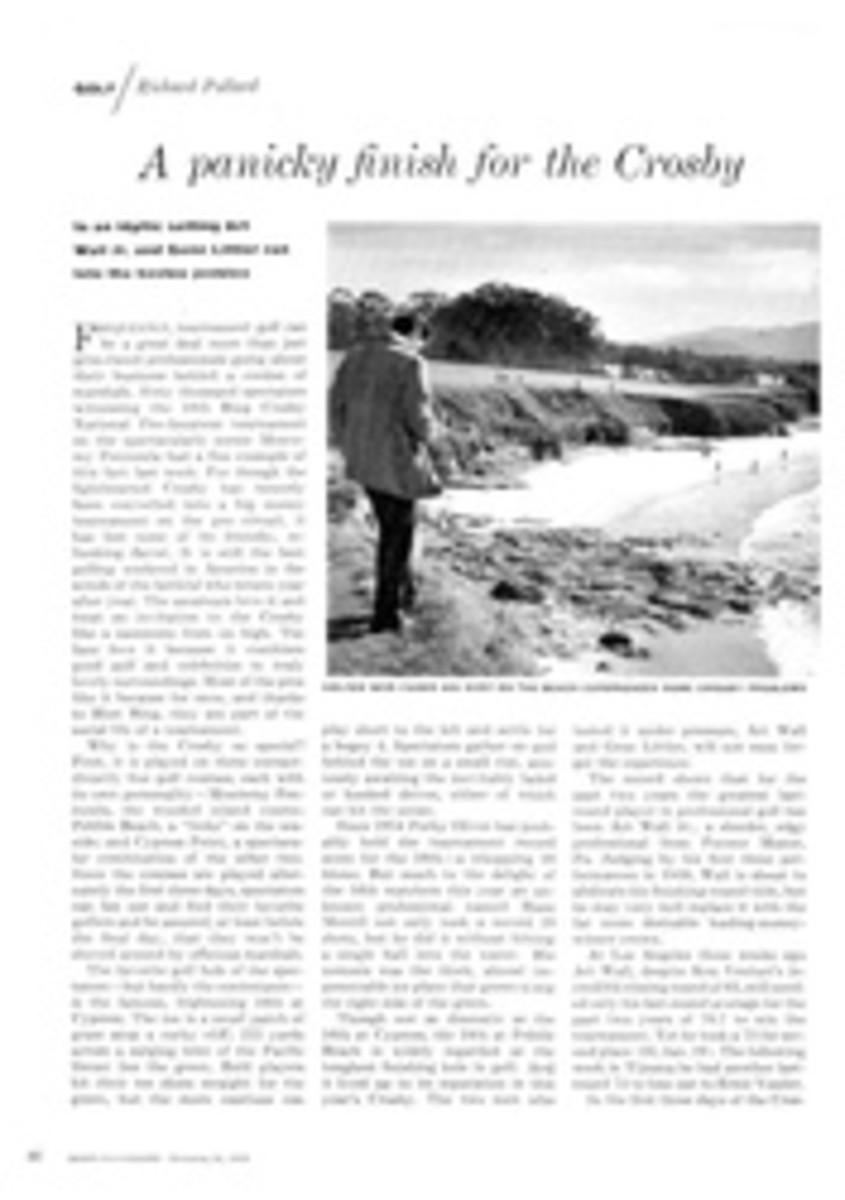
The jockey who loves to cook
When I am too old to be a jockey, I should like to be a cook," said Albert Foot. We were sitting in his pretty cottage at Elmont, Long Island, a stone's throw from Belmont Park, in a basement room fixed up with a little bar and several tables with red-checked tablecloths—for all the world like a little French café. His wife, Raymonde, broke into the conversation to explain that her husband learned to love both horses and la cuisine when he was a boy growing up in Chant
illy, near Paris. His father was English, and a jockey, but his mother was French and a really extraordinary cook. "Now," said Raymonde, "Albert cooks when he can; quelquefois no time: too many horses to ride."
As everyone who follows racing knows, it looks as if there will be many more horses in Albert Foot's life. For though he is 39 years old, he is ideal in build and weight, as well as in experience, for a jockey of jumping horses. Under first call to Mrs. Marion du Pont Scott's Montpelier Farm, he has ridden winners in the past few years in most of the important steeplechase and hurdle races in this country, topping off last year's successful season with his victory on Benguala in the Temple Gwathmey, the world's richest steeplechase.
In discussing food with me, Foot revealed himself to be a modest but perfectionist cook. The classics of every French home—the perfectly roasted chickens, the coqs au vin, the tender omelets, the nourishing soups, the savory ragouts and the innumerable preparations of vegetables that are dear to the French heart—these are what he knows and loves. Some day he may hurdle the tallest culinary fence to become a famous chef. Meanwhile, here is his delectable version of pot-au-feu, a dish of simple country origin, which is shown as prepared for serving in the photograph, on the opposite page.
Pot-au-feu (it translates literally as pot-on-the-fire) is the French equivalent of New England boiled dinner. The broth is served first with prepared cro√ªtes of bread (see recipe), and the meat and vegetables that have cooked in this broth are arranged on a platter, to be served as a succeeding course. Traditional accompaniment to this dish is coarse salt (the kind sold in flakes for salt mills). Also pickles, mustard and sometimes a horseradish sauce. Leftover meat provides a meal the next day—cut up in dice shape, dressed with a sour French dressing and onion rings and served cold as a salad.
POT-AU-FEU (serves four)
5 quarts of cold water
3 pounds bottom round of beef or 1½ pounds bottom round and 1½ pounds lean plate
1½ pounds beef shank sawed in 3-inch lengths (or a knuckle of beef sawed in two)
5½ tablespoons of salt
1 peeled onion stuck with 1 clove
¼ medium-sized rutabaga or 2 white turnips, peeled and cut in quarter
8 leeks, cleaned
1 bunch of carrots, scraped and halved
1 bouquet tied in cheesecloth bag (sprig of parsley, pinch of dried thyme and a bay leaf)
1 teaspoon Kitchen Bouquet or meat extract
In an earthenware marmite or large soup kettle put meat and water. Cover tightly while bringing very slowly to the boil, but peek into the pot repeatedly and keep skimming off scum that rises to the surface. Do not allow pot to boil before it is well skimmed or the floating matter will sink to the bottom and make the bouillon muddy. When boiling commences, put in the salt and the onion, cover and simmer slowly so as to obtain only one or two steam bubbles every second. After 2 hours add bouquet and all vegetables except 6 of the leeks. After another hour add the remaining leeks. When these are cooked (about 15 minutes), strain broth and arrange meat and vegetables on a platter, discarding bouquet and bare bones. Keep the platter hot until ready to serve. Reheat broth, adding Kitchen Bouquet for color. Put into marmite or tureen to be ladled out into soup plates at the table.
Croûtes to accompany broth
Slit loaf of French bread lengthwise, then crosswise to make four pieces. Remove all crumb (the soft, inside part). Heavily paint the remaining crusts with melted butter on all sides. Dry out in a very slow oven till light golden in color and very crisp.
PHOTO
RIDER'S FAVORITE in kitchen is Old World equivalent of the New England boiled dinner.
PHOTO
LOUISE DAHL-WOLFE/PLATTER AND BOWL FROM SOUPCON

